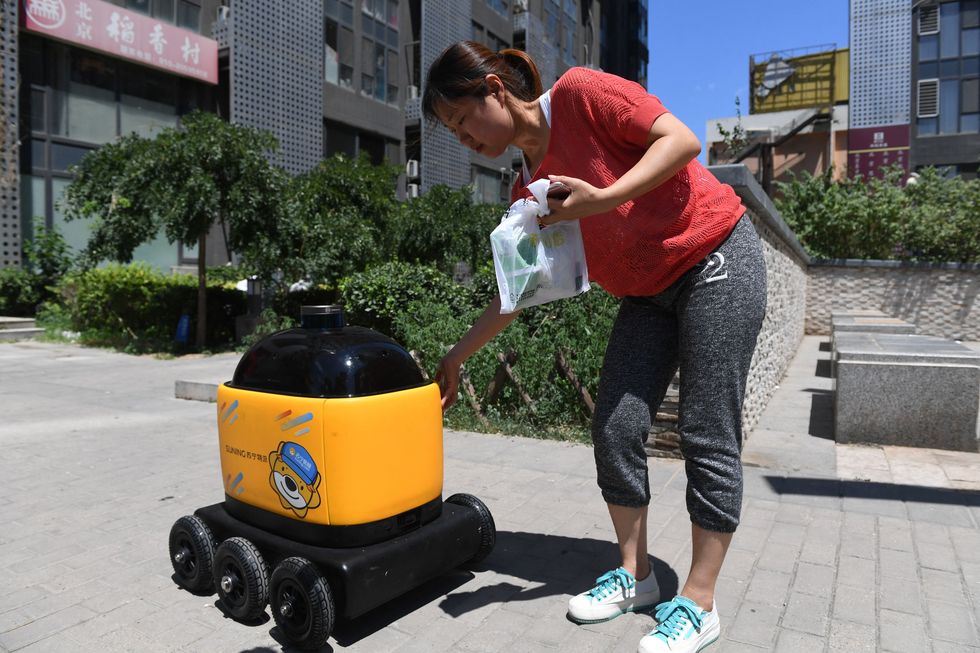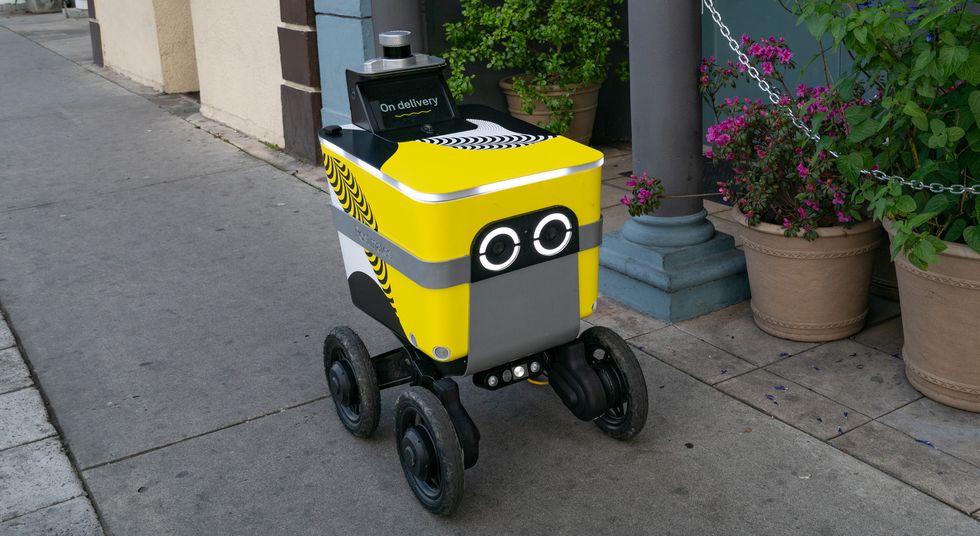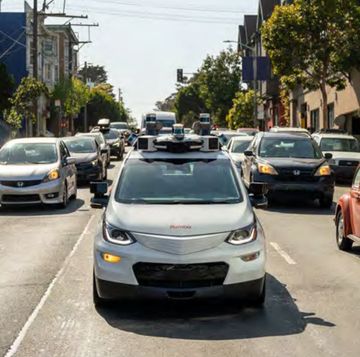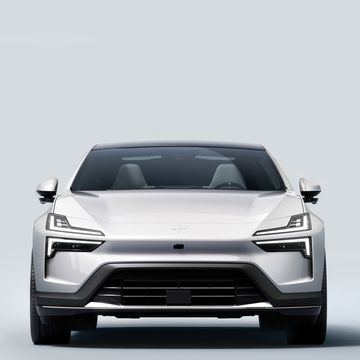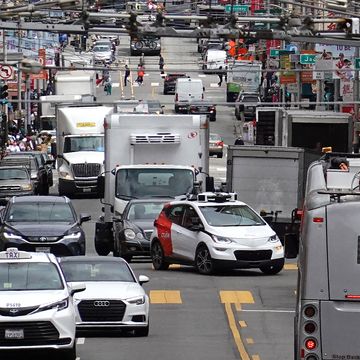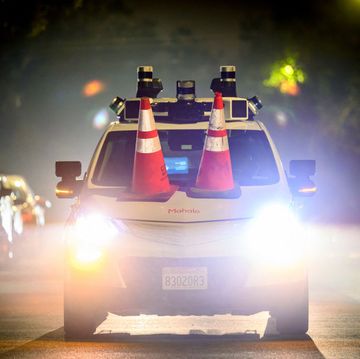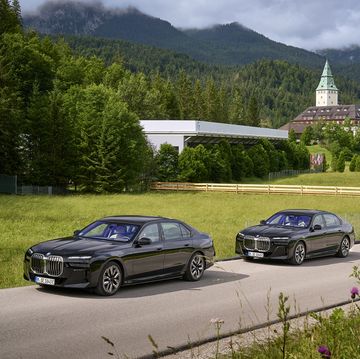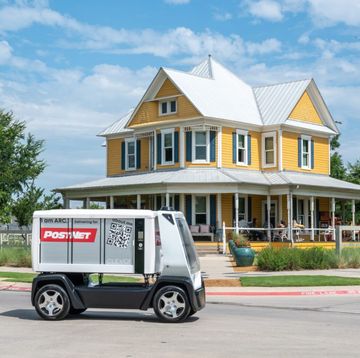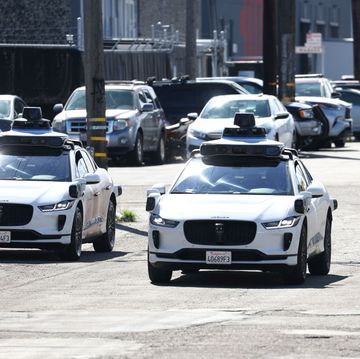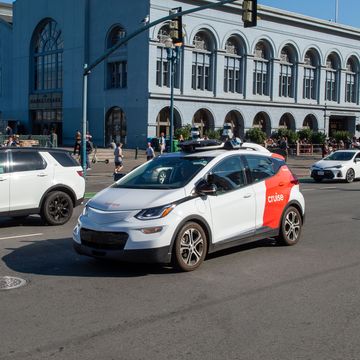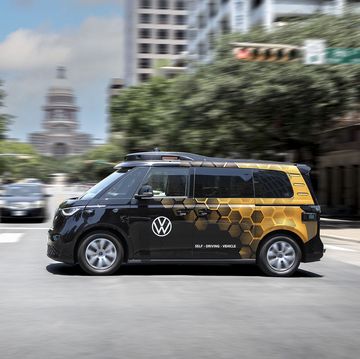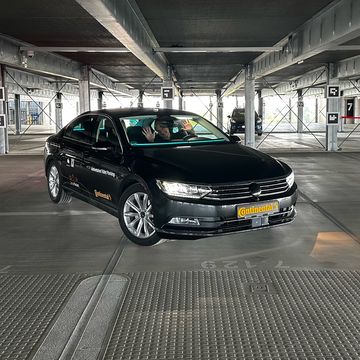- Instances of theft and vandalism of delivery robots used by restaurants and other businesses have been noted in the past couple of years.
- Smaller delivery robots feature cameras and sirens to ward off thieves and vandals, though these measures do not appear to be effective in all instances.
- Robot developers have focused on security measures from the start, but robots may remain relatively easy targets as they become more commonplace.
A feature of living in our current mixture of a Neill Blomkamp future and a Paul Verhoeven future is that issues once largely confined to dystopian sci-fi films are slowly and predictably becoming a part of daily life.
The capabilities of humanoid robots that can freely roam the streets, for instance, are largely held back by battery technology at this point, as large companies including Hyundai and Tesla continue developing humanoid robots.
It's clear that we're still in the early stages of robots replacing human workers when it comes to ride-hailing services, in one example. And the companies developing delivery robots aren't really hiding this goal, but are actively pitching it to commercial buyers and users of robots.
But the realities of our current dystopia also mean that theft from delivery robots is already something that has been documented in several cities where robots have become more or less commonplace.
Los Angeles TV station KTLA5 has recently reported on a number of robot theft and vandalism incidents in West Hollywood, where some robots have been robbed of the goods they're delivering, including food. The robots are used by local restaurants and are built by Serve Robotics, which pointed out to KTLA5 that despite some incidents the robots still have a 99.9% delivery completion rate.
Incidents of theft and vandalism have made their way to social media over the past few months, including TikTok as KTLA5 notes, with one prominent account named @filmtherobotsla compiling videos of some of the mayhem.
Early on delivery robot developers have tried to allay commercial customers' concerns over the potential for theft from robots, showcasing locked compartments and plenty of surveillance tech on the robots themselves, in addition to loud sirens. After a honeymoon period of sorts early on in the pandemic where robots were generally left alone, this is no longer the case, and sirens aren't stopping acts of theft and vandalism in all cases.
But Los Angeles isn't the only place where robots are encountering safety issues. The campus of East Carolina University has also seen instances of vandalism against GrubHub robots, made by Starship, earlier this year.
The robots have been found flipped upside down, and have been found partially submerged in a creek, as WITN reports.
"The robots are constantly monitored and equipped with twelve cameras and audio alert systems, meaning any improper conduct will be detected immediately. If an incident does occur with a Starship robot, one of our robot rescuers can respond quickly," robot builder Starship Technologies says regarding robot safety, adding that acts of vandalism or theft are reported to authorities.
While that may be true in theory, instances of actual prosecution for theft from robots in cities where they operate have not been easy to discover. As with far more widespread instances of front porch package thieves or shoplifters, despite the volume of video evidence the robots can produce the police have to actually take some investigative steps to identify and locate the suspects.
Damage to and theft from delivery robots is covered under existing statutes for theft and vandalism to property, as law enforcement sources and robot developers point out. The priority of the cases themselves, however, may not prompt such action in all situations.
That priority, by they way, also appears to roughly correspond with theft of food left on a porch by human delivery drivers, with video evidence recorded by a doorbell camera. A locked compartment and siren, it seems, may not be sufficient deterrents to thieves or vandals, at least when it comes to smaller delivery robots the size of push mowers.
Nuro AI, builder of larger delivery robots that use city streets and mingle with slower traffic, also features locked compartments, though instances of theft from its robots have not been noted. Perhaps size itself is a deterrent, as larger robots are more difficult to tip over and have sturdier compartment doors.
Despite a reduced sense of urgency after a scramble early in the pandemic, which has prompted Nuro AI to lay off 30% of its staff earlier this year, food delivery robots are slowly going mainstream. Serve Robotics, backed by Uber, is set to expand its food delivery program to more US cities this year, with plans to add 2000 robots to it operations.
The size of a shopping cart, this robot can carry up to 50 pounds of goods, but is confined to sidewalks and other pedestrian areas, and the robots themselves are designed to be opened via app by a customer.
While robbing delivery robots may still seem like a cyberpunk crime of the future, it is also something that could expand as usage of delivery robots grows. But robot security will have to catch up as well. Let's hope we won't see robots equipped with tear gas canisters to ward off vandals, but we have a feeling there are plans for such systems on the drawing boards.
Will delivery robots edge out human delivery workers on a large scale in this decade, or will this process take longer? Let us know what you think in the comments below.

Jay Ramey grew up around very strange European cars, and instead of seeking out something reliable and comfortable for his own personal use he has been drawn to the more adventurous side of the dependability spectrum. Despite being followed around by French cars for the past decade, he has somehow been able to avoid Citroën ownership, judging them too commonplace, and is currently looking at cars from the former Czechoslovakia. Jay has been with Autoweek since 2013.

